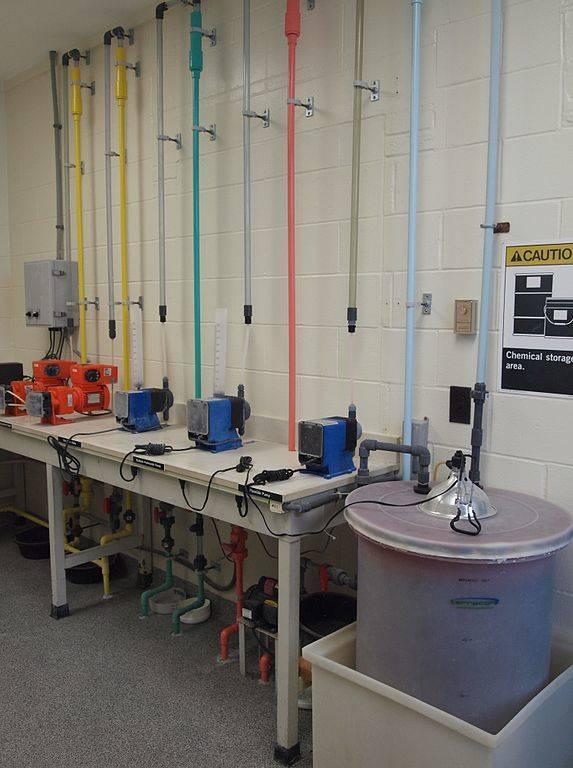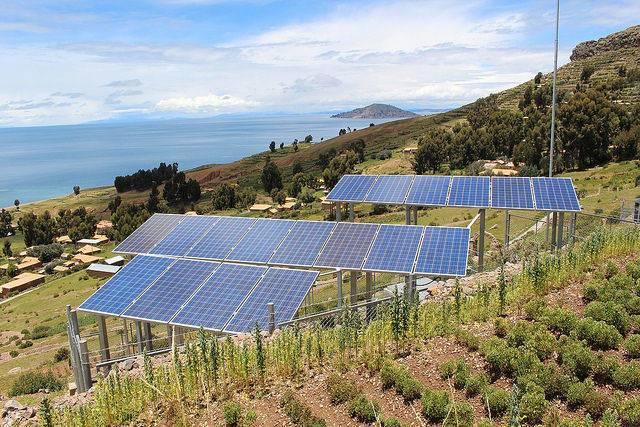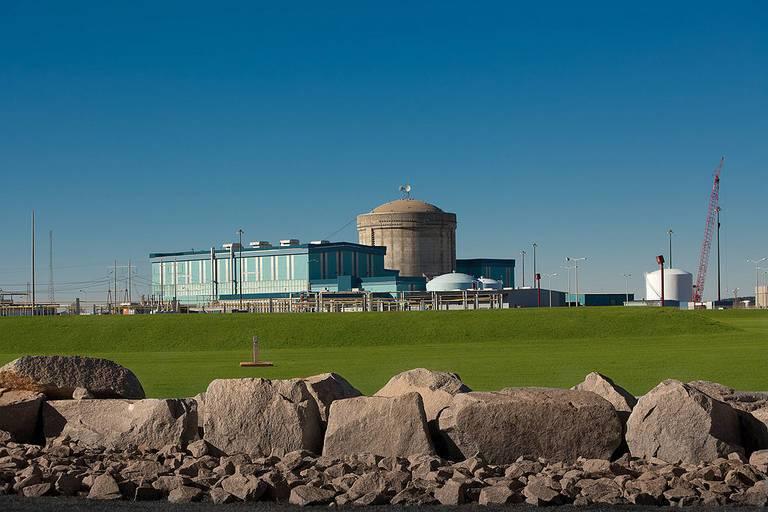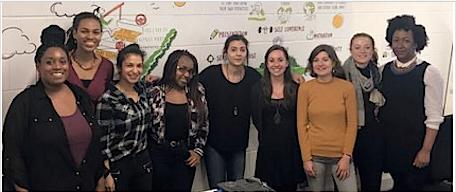Salesforce Takes Another Step Toward 100 Percent Renewables


This morning, Salesforce announced another step made toward the cloud computing giant’s goal of running 100 percent on renewable power.
The company has switched to CleanPowerSF, San Francisco’s clean energy network. The city’s program is part of a statewide initiative that allows business and residents to work with the local utility, Pacific Gas & Electric, in order to deliver clean energy at cost-effective rates for their homes and offices.
According to the company, aligning with CleanPowerSF is key to what Salesforce describes as its path towards becoming a net-zero operation, based on these three pillars: avoid, reduce and mitigate.
On the “avoid” front, the company claims that the multi-tenant architecture of its software platform is 50 times more carbon- and energy-efficient than on-premise software systems. As a result, Salesforce says it was able to displace 2 million metric tons of emissions last year.
“Reduce” involves working with what the company has at hand to make its operations leaner, whether their data centers improve on energy efficiency metrics or its facilities managers can incorporate more green building elements within the office space the company leases. For example, the two main buildings comprising Salesforce’s San Francisco operations are LEED Platinum certified.
Finally, until Salesforce says it is truly running on 100 percent renewables, the company will strive to achieve what it can to “mitigate” its environmental footprint now. To that end, Salesforce signed two power purchase agreements (PPAs) last year that resulted in procuring 64 megawatts of clean wind power.
"Salesforce believes that working towards 100% renewable energy across global operations is one of the most important things we can do to address the effects of climate change," said Suzanne DiBianca, a Salesforce executive vice president, in a public statement. "By choosing SuperGreen, we hope to show that when cities and companies work together to reach shared climate goals the partnership has a unique ability to create positive impact that extends to the surrounding communities and ecosystems.”
Image credit: Salesforce/Facebook
Why Google Nudges Employees to Eat Less Meat


By Kenny Torrella
In 2013, President Obama formed a new department, informally known as the “Nudge Unit,” tasked with creating and implementing small changes to federal programs that could have an outsized impact. “Nudging” comes from behavioral economics, and its proponents say that reminders, indirect suggestions, and minor adjustments to our environment can greatly influence our behavior.
Now Google, the longtime business leader, is taking lessons from behavioral economics and becoming a sustainability leader. For almost a year, the company has been nudging its employees to eat less meat, and it’s working. Google has teamed up with the Better Buying Lab, a division of the World Resources Institute, which uses the nudge theory to “enable consumers to buy and consume more sustainable foods.”
Google’s health nudges, which have made its employees 71 percent more likely to eat healthy at work, include the following:
- Replacing 50 percent of the beef in hamburgers with mushrooms
- Creating plant-based versions of popular dishes, like tacos
- Giving healthier dishes more indulgent names (e.g., “Korean spiced maitake tacos” instead of “mushroom tacos”)
- Positioning vegetarian dishes more prominently on menus
In 2016, Google also served plant-based shrimp from New Wave Foods.
Scott Giambastiani, Google’s global food program chef and operations manager, told Fast Company that “we need to think through how we can make a better choice easier for people.”
Google’s well on its way to doing just that—and in good company. Cafeterias nationwide have been undergoing a more plants/less meat makeover during the past decade. Take the Meatless Monday movement, for example. Hundreds of K–12 school districts and universities are going plant-based on Mondays. Or consider the American Medical Association, which has called on hospitals to offer more plant-based meal options.
Why the shift toward plant-based eating? Cutting back on meat consumption is better for our health. Generally, eating less or no meat reduces your risk of coronary heart disease, Type 2 diabetes, and some forms of cancer.
While Google is focused on improving employee health, serving less meat is also part of its initiative to reduce its carbon footprint. Significantly more water and other resources are required to raise and slaughter animals than to grow fruits, vegetables, legumes, and grains. According to a study published in the journal Climatic Change, a plant-based diet has a significantly lighter carbon footprint than a meat-heavy diet.
Google is no stranger to trying to change our food system. In 2013, Google co-founder Sergey Brin bankrolled the development of the first “clean hamburger,” a burger patty grown from animal cells. Brin supports clean meat because he believes current methods of meat production are unsustainable, and he’s not comfortable with how farmed animals are mistreated at factory farms.
In early June, when President Trump backed out of the Paris Climate Accords, Silicon Valley leaders such as Elon Musk and Mark Zuckerberg declared their continued commitment to fighting climate change. They should begin by serving their employees more healthy, eco-friendly plant-based meals. All it takes is a little nudge.
Kenny Torrella is the public relations manager at Mercy For Animals. Image credit: Holly Williams
Confirmation: Flint's Lead Poisoning Was Human Caused


Scientists at the University of Michigan say they have confirmed the source of the lead that filled drinking water after the city of Flint, Mich. began sourcing from the Flint River in 2014.
The cause wasn't broken water mains as one Department of Environmental Quality official suggested, but the omission of an additive that is normally used in water city treatment. The mineral, orthophosphate, blocks lead corrosion in service line pipes, which have in the past, been made of lead. Without the inhibitor, the pipes will slough off lead particles, which are then washed into the water source.
"[In] April 2014, the City began drawing and treating water from a new source, the Flint River, without adequate corrosion control (orthophosphate)," said the researchers. It treated the water from the Flint River with chlorine, presumably figuring that would be sufficient.
Water quality issues in Flint River
Lead contamination is a common risk that can occur when there are changes in water quality, such as an inferior water source that hasn't been properly treated. Decades of industrial pollution and poor environmental control helped set the stage for just such a catastrophe by providing conditions that would essentially promote the deterioration of tens of thousands of water pipes within the city.
In order to confirm that it was poor water treatment procedures and not the city's Polar Vortex winters of 2014 and 2015 that caused the disaster, the researchers tracked down a list of U.S. water utilities that did use orthophosphate in their water systems and compared them with water utilities that experienced rampant problems with lead poisoning. They then compared metal scrapings from pipes in 26 utilities that used a lead inhibitor and samples from 10 service lines in the Flint water district. Lastly, they examined pipe scrapings from London, Ont. Canada, where lead poisoning had also been detected.
The scientists discovered that in city pipes where orthophosphate had been introduced, lead corrosion was minimized. The Flint and London, Ont. pipes, however, showed significant damage from lead corrosion. Cross-section cuts of corroded pipes also revealed a ragged surface that had been "eaten away" by the polluted water, confirming that the "missing lead" had been deposited into the residents' drinking water.
"If we average that release over the entire period the city received Flint River water, it would suggest that on average, the lead concentration would be at least twice the EPA action level of 15 parts per billion," explained Terese Olson, an associate professor of civil and environmental engineering at University of Michigan's Environmental Science and Technology Letters. Olson is the lead researcher for the study.
Olson said some of the lead would have been consumed by residents and some may still be stored in residents' plumbing system, since lead isn't automatically washed down the drain.
"In other words, there is a chance that some of that lead is a potential health risk even after the lead service line is removed," said Olson.
Further, other types of pipes, like steel, can actually absorb the lead that passes through it. That continues the risk of future contamination, said Brian Ellis, a co-author and associate professor of civil and environmental engineering. Lead exposure can present a long-term challenge.
Lead in water source? Not a federally regulated issue
With all of the concerns about the dangers of lead poisoning in children, one would think city utilities would be required to use lead inhibitor treatments. But the Environmental Protection Agency only regulates a portion of the utilities in the country. It also doesn't enforce restrictions on lead in drinking water, though it does provide guidance as to maximum levels. Some experts feel that that recommended limit of 15 µg/L is too high and should be lowered.
One positive outcome of this research is that cities now have a greater understanding of the snowball effect of water pollution. Years of industrial dumping into the Flint River contributed to a "water quality change" that in the end, helped set the stage for lead poisoning of some estimated 8,000 children. Cleaning up water sources and regulating what utilities can and can't do with public water systems should be a key issue in today's communities.
But the factors that led Flint to make the decision to use a decades-long polluted water source begs questions as well about the priorities that cities and states make when it comes to accessing and supplying a public water supply.
Flint's water woes didn't start with an arbitrary decision to change water sources. It started with politics, dysfunction and failed negotiations that ultimately forced officials to choose a wrong course.
The question now, is whether the city and state can set the groundwork to ensure that there is good leadership and informed decision-making when it comes to protecting the public's most vital resource and the safety of the city's future generations.
Flickr images: Blueskiesfalling (Connor Coyne); Z22; Herbert L. Fred, MD and Hendrik A. van Dijk
59,000 Indian Farmers’ Suicides Linked to Climate Change


According to a study by Tamma Carleton, a Ph.D. student at the University of California-Berkeley, climate change and its impacts on crops in India can be linked to 59,000 suicides across the country over the past three decades.
Carleton’s grim assessment adds to the explosive debate over the causes behind the rise of suicides across India the past four decades. Various research shows that India’s suicide rate has increased steadily since the late 1970s, and many underlying reasons, from the country’s rapid social change to the marginalization of many citizens, have been explored. Estimates generally put one-fifth of the world’s suicides in India.
Farmers are among the Indians who have turned to suicide in larger numbers, and often do so out of economic desperation. Some analysts say origins of the crisis lie with a World Trade Organization (WTO) ruling almost 20 years ago that opened up India’s farming sector to the world’s largest agribusiness companies. Others counter that the lack of access to irrigation, and dependence on rain, in turn results in far more reliance on pesticides and fertilizers – and hence the links between loans, bankruptcy, and suicide in the worst-case scenarios for owners of small Indian farms.
What is not in dispute is that more farmers throughout India find themselves trapped in debt; have little, if any, access to any farming assistance programs available in wealthier nations; and as a result, a spell of bad weather can result in tragedy for a family.
In recent years, press reports in India have said that over half of the families working in agriculture are buried in debt – and that in some states, as many as 90 percent of farmers are unable to pay off those loans. And instead of farm credit programs or access to the banking system, many of these farmers rely on informal financial networks, which are a polite description for what many of us would call predatory lenders or even loan sharks.
Evidence so far suggests that this trend will not improve anytime soon, as climate change continues to wreak havoc across the subcontinent. In India’s southern state of Tamil Nadu, for example, farmers have been coping with the worst rainfall in 140 years, and out of anger and desperation, farmers have traveled far north to bring attention to their plight in the country’s capital, New Delhi.
Carlton approached her research by analyzing available government data from the past 47 years, including suicide records, crop yields and climate patterns. She concluded that for every 1°C increase in a single day’s average temperature, there is a correlation to an additional 70 suicides. This effect, according to Carlton, overwhelmingly occurs during India’s growing season – which is also the time of year when heat can also kill crop yields. Overall, Carlton’s says her analysis shows that rising temperatures over the past 30 years can he accountable for 59,300 suicides, or 6.8 percent of India’s overall increase in its suicide rate.
Demographers, mental health experts and policy makers will agree to disagree on Carton’s research and the degree to which climate change has had an impact on Indian farmers’ suicides. But where they can find consensus is that India’s farming and food distribution systems are failing many people.
On one hand, subsidies and improvements in agricultural techniques in recent years have succeeded in boosting yields and even causing a surge in imports to regions such as the Middle East. Nevertheless, many Indian children are still suffering from malnutrition, and too many farmers are not coming anywhere close to gaining the economic benefits government after government have promised for several decades. For companies who see Indian agriculture as important to their supply chains' future, working to ensure farmers can grow their way out of debt will be start towards building trust in this rapid- but unevenly-growing economy.
Image credit: CIMMYT/Flickr
Will China and India Lead on Global Climate Action and Environmental Protection?


By Mark Robinson
A version of this article originally appeared in the Manchester Policy Blog following the Rising Powers and Interdependent Futures conference on June 21-23.
Shifting global leadership on climate action
June 1, 2017, marked a decisive shift in global leadership on climate change following President Trump’s decision to withdraw from the Paris Agreement, signed by all but two countries in 2015. This decision has wider ramifications for global politics and for national commitments to keep global warming to less than 2 degrees Celsius.
China seeks to assume the political mantle for global climate leadership, backed by financial resources and massive investments in renewable sources of energy, especially solar power. It perceives huge growth potential in global solar and wind markets. India has ambitious national commitments on solar energy and curbing fossil fuel use, but with fewer ambitions on the global political stage.
Projected declines in coal use in China and India are likely to reduce growth in global carbon emissions by roughly two to three billion tons by 2030 compared to forecasts made a year back. Coal-fired power stations are increasingly uneconomical compared to solar power. In May, India abandoned planned investments in coal-fired power stations with a combined capacity of 14GW, equivalent to the whole of the UK. Both countries are likely to achieve national climate emissions reductions ahead of target, potentially serving as a significant contributor to reduced net global emissions.
Market forces favoring solar and wind power threaten to leave the United States behind, with the continued decline of coal, whereas China wants to benefit from new energy markets, and plans to invest US$360 billion by 2020. This would take the proportion of renewables in domestic energy to 50 percent by then. India expects 40 percent of its energy needs to be met by renewables by 2030. Meanwhile, the global renewable energy market is expected to reach US$13 trillion over this period, spurred by national commitments under the Paris Agreement.
In pursuing these ambitious climate and energy policies India and China have an opportunity to lend visible support to the German G20 Action Plan on Climate and Energy Growth.
Lagging responses on environmental policies
But progress on climate action is not yet matched by comparable leadership on domestic environmental policies; deep problems of air, soil and water pollution with excessive use of pesticides and fertilizers are causing chronic health impacts in both China and India. Public pressure is building and both governments are looking to the experience of the United States and other countries in successfully addressing such problems.
Over the past five decades, the United States has excelled in tacking environmental problems through sustained bipartisan policy responses. But this is now under threat. The US withdrawal from the Paris Agreement marks the culmination of a series of domestic policy reversals under the Trump administration on climate and environment. These include overturning the Clean Power Plan (designed to reduce CO2 emissions from electrical power production), protection of air and water, and massive budget and staffing reductions for the Environmental Protection Agency (EPA). It is therefore ironic that U.S. global leadership on environmental protection is now looked at for inspiration to inform domestic environmental policy in China.
Lessons from the United States
One important lesson from the U.S. experience is the power of public pressure and the media to galvanize government action. Publication of Rachel Carson’s Silent Spring in 1962 drew public attention to dangers of the health and environmental risks of unregulated pesticide use. This spurred massive media coverage which in turn spurred the creation of the EPA under President Nixon in 1970.
A similar tipping point is possible in China. Documentary film maker Chai Jing released Under the Dome in 2015, which was openly critical of failures to tackle air and water pollution. It received several hundred million views before it was taken down four days later. Public discontent is growing and the Chinese government recognizes the urgent need to respond.
Transparency and openness to the fore
There are important lessons for China from the U.S. experience, with air and water pollution rising to top of domestic policy agenda, fueled by public protest and negative media coverage. Government is recalcitrant on the release of public information on air, water and soil pollution. Prompted by monitoring by the US Embassy in Beijing, China now permits the public release of air pollution data in a growing number of cities and outside thousands of factories.
China and India are both signed up to Principle 10 of the UNEP Bali Guidelines which was adopted in 1992 as a part of the Rio Declaration, which states that: “Environmental issues are best handled with participation of all concerned citizens, at the relevant level. At the national level, each individual shall have appropriate access to information concerning the environment that is held by public authorities, including information on hazardous materials and activities in their communities, and the opportunity to participate in decision-making processes. States shall facilitate and encourage public awareness and participation by making information widely available. Effective access to judicial and administrative proceedings, including redress and remedy, shall be provided.
WRI’s 2015 Environmental Democracy Index shows that China performs reasonably well on the right to information and public participation in decision making, but not as strongly on the rights to redress and remedy, as compared to India, which has the legal infrastructure in place for this purpose. China now acknowledges the need to empower citizens to demand information and hold officials accountable for lack of action, through the law courts and other measures. Since the introduction of the new Environmental Protection Law in 2015, China’s courts have accepted 189 public interest environmental cases, mostly brought by environmental NGOs. The Ministry of Environmental Protection, which is responsible for implementation of the new law, has intensified local inspections of heavily-polluting industries and is now actively collecting public complaints on environmental issues.
As noted by the Economist, “Openness would enable the Chinese to understand the risks they face, and to hold officials to account for failing to stop polluters from poisoning them”. Global leadership on climate action and environmental governance means living up to the spirit and practice of citizen engagement and regulatory enforcement, and not just capitalizing on the potential economic returns.
Nuclear Energy Appetite Tempers in South Carolina


The U.S. nuclear energy industry got a cold shower earlier this week when construction halted on two reactors in South Carolina. That gave nuclear opponents something to cheer about, but perhaps not for long. A much-anticipated national grid study from the Department of Energy is expected to make the case for continuing to rely on nuclear as well as coal for large scale, baseload power production.
Although nuclear energy is promoted as a zero-emission fuel, companies seeking to burnish their green brands are looking to sources that are untainted by episodes like the Fukushima disaster. The new grid study won't do them any favors if it promotes a national policy of continued reliance on nuclear.
Nuclear energy in South Carolina
South Carolina is an interesting test case for the future of nuclear energy in the U.S.
The state still relies heavily on nuclear power plants for electricity production, and it needs every watt it can get. As of 2015, South Carolina was the eighth-highest in the country for per capita retail electricity sales.
According to the U.S. Energy Information Agency, the high rate of consumption is partly because in South Carolina electricity is a common heating source in the winter, and usage skyrockets in the summer when demand for air conditioning soars.
The state currently has four nuclear power plants, which provided about 55 percent of its electricity generation in 2015.
Coal and natural gas rounded out most of the remaining generation in 2015. Renewables came in far behind at 5.5 percent, with the majority coming from hydroelectric sources.
So far the state has relied almost exclusively on large, centralized power plants for electricity, but the situation is poised to change rapidly. In 2014 a new state law favoring distributed solar came into effect, and residential solar installations began to bump up.
The state added about 1,000 new solar jobs in 2016, and the solar industry is anticipating steady growth as South Carolina's manufacturing sector -- notably early adopter Boeing -- comes to realize the benefits of installing on site solar.
Two plants down...
The work stoppage at the two South Carolina plants was not entirely unexpected. They were under construction by Westinghouse at the existing Virgil C. Summer nuclear facility near Jenkinsville, and a series of delays and significant cost overruns helped drive the company into bankruptcy earlier this year.
Last week Toshiba, the parent company of Westinghouse, came through with a guarantee of $2.2 billion to keep the work going, but apparently that was not enough to convince the utility Scana Corp., which holds a 55 percent stake in the project.
The turning point was a report by the state-owned water and electricity utility Santee Cooper, which holds the other 45 percent stake. The report estimated that mothballing the plants would save $7 billion for rate payers.
Santee Cooper alone covers a lot of ground. The utility is serves 20 electric cooperatives, covering every county in the state. It also has a roster of 29 major industrial customers under its belt along with Charleston Air Force Base.
While Santee Cooper customers are breathing a sigh of relief, the damage is already done. Here's a rundown from The Boston Globe:
The utility had already spent about $5 billion for its 45 percent share of the project, and completing it would have cost an additional $8 billion, plus $3.4 billion in interest.
...probably for good
Although a permanent halt to construction has not yet been approved by state authorities as of this writing, the decision looks all but certain.
That's partly because it is becoming difficult to make the case that economic growth in South Carolina depends on adding more nuclear capacity.
The first reactor was initially expected to be commissioned by now, but as the delays piled up the earliest estimate for completion was pushed back to 2024.
That provides a long window for the state's solar industry to accelerate, and utilities are responding.
In the latest twist, SCE&G (a subsidiary of Scana) recently announced that it would offer its customers the opportunity to buy subscriptions to solar panels at its solar farms.
The South Carolina wind industry is also poised to fill the gap left by the loss of the nuclear plants.
The state is already a top wind turbine manufacturing and R&D center, aided by its international port facilities. It also has one of the largest offshore wind potentials on the wind-rich Atlantic coast.
What about the grid study?
As of now, the two utilities are planning to keep equipment at the two plants in working order, apparently on the off chance that it could be salvaged for use in another country where the environment is more hospitable to nuclear.
There is also a chance, though a remote one, that the U.S. government could come through with subsidies that would relieve South Carolina electricity customers from the full burden of paying for the two new plants.
Whether or not that happens may depend on the results of the new grid study, ordered by Energy Secretary Rick Perry last April.
During his tenure at the Energy Department, Perry has consistently promoted renewable energy and clean technology, including distributed renewables. However, at least initially the new study seemed intended to promote central power plants -- including nuclear, coal and hydroelectric -- as a matter of national security.
More recently, a leaked draft of the new study suggests that it may not paint such a rosy picture for baseload power after all, though that could easily change in the final version.
As for the national defense angle, that's not as big of a stretch for the Energy Department as it may seem. The agency's main mission is rooted in the national defense as steward of the national's nuclear programs, and the Energy Secretary sits on the National Security Council.
Meanwhile, the Energy Department's existing grid analysis programs have been humming along smoothly -- and they indicate that the U.S. grid can absorb more renewable energy without sacrificing reliability.
In addition, the U.S. Department of Defense has been installing solar and other renewables at its facilities, partly to cut costs and partly to enhance energy security for its operations.
The new grid study was supposed to be released by the end of June and so far the Energy Department has not explained the delay.
Perry could be waiting until one of his agency's legitimate, peer-involved grid programs comes out with another update, rendering the new study moot.
Energy industry observers are already predicting that the South Carolina debacle spells the end of the nuclear industry in the U.S. for the foreseeable future. The new grid study could breathe new life into the beleaguered industry, or pound yet another nail in the coffin.
Inventshift showcases social enterprises for global good


New website links UK small businesses with expert business advice


UPS, TerraCycle Divert 40 Million Pounds of Waste from Landfills


You might be diligent about pitching anything and everything into that blue bin, but there is a good chance that many of those items do not end up becoming recycled. Certain types of plastic cannot be reprocessed depending on what municipality you live in; that vinyl binder you no longer need is actually lined with cardboard, not mention the metal fasteners in the middle; and your favorite brand of toothpaste may be comprised of a material that cannot be shredded and churned into something new.
But there are some companies filling the gaps in the U.S. and global recycling system. TerraCycle, for example, has long enjoyed a reputation for transforming trash into more useful products, therefore offering companies a compelling waste diversion option. And integral to TerraCycle’s growth as a circular economy solution has been shipping and logistics giant UPS.
According to UPS, the relationship it has built with TerraCycle has resulted in at least 40 million pounds of waste diverted from municipal landfills since 2012. That’s a lot of snack bags, dental floss dispensers, toothpaste tubes and even contact lenses. In fact, UPS claims that at least 3.5 billion pieces of trash have been upcycled into useful items such as building materials for park benches as well as garbage cans. Some of the ways in which UPS has assisted TerraCycle’s mission are not completely obvious.
For example, while most of us know of UPS by the brown-clad drivers zipping through our neighborhoods, the company is also a giant customs broker both in the U.S. and abroad. UPS’s customs crew assists TerraCycle’s various recycling teams to handle the complex tangle of import and shipping regulations and restrictions between countries. TerraCycle says its partnership with UPS has helped millions of people across 21 different nations participate in the company’s various recycling programs.
Furthermore, it has to be easy for consumers to mail in those pouches and envelopes containing items that otherwise would end up in the kitchen or bathroom trash. Then there are those boxes, including ones that hauled empty bottles of Garnier personal care products to TerraCycle's operations earlier this spring and summer. Other companies have gone beyond their own products; Tom’s of Maine, for example, launched a program earlier this year that allowed consumers to send in unwanted toys to TerraCycle. All these various programs require their own individual packaging requirements, and UPS deserves credit for harnessing the technology necessary to manage the 400 to 500 shipments that arrive at TerraCycle’s facilities.
According to UPS, the company’s wide-reaching global logistics network has allowed TerraCycle to access hundreds of thousands more business and residential locations worldwide, with the end result that more waste is being recycled or upcycled instead of simply ending up as municipal waste.
UPS’s partnership with TerraCycle is just one of many ways in which the delivery service says it has become a far more sustainable operation. Over the past year, the company has accelerated investments in solar power, advanced hydrogen fuel cell technologies and has strived to develop more commitments to procuring new sources of sustainable fuel and transport options.
Image credit: Andrew W. Sieber/Flickr
Obamacare Boosts Jobs and the Economy: Report


We've been hearing it for years: The Affordable Care Act (AKA ObamaCare) was bad for jobs. From presidential campaign stumping to the pages of the Heritage Foundation, there’s been a litany of dire conclusions about the impact of the country’s first official stab at universal health care.
Most memorable (if faulty claims can be such), was Ted Cruz’ assertion in early 2016 that the health care law had “forced workers into part-time jobs.”
“It is the biggest job-killer in this country,” Cruz told the crowd after he was asked his take on the ACA. “Millions of Americans have lost their jobs.”
Even at that time, researchers knew this claim was suspect. The U.S. Bureau of Statistics indicated that part-time workers were taking on full-time work and the availability of those jobs were actually increasing. It’s true that the Congressional Budget Office (CBO) had predicted there would be job losses (and opponents of the ACA wasted no time in picking that up) because it could not foresee how small and medium-sized businesses could shoulder the cost of compliance. But study after study gradually indicated that was a false worry: U.S. businesses were innovating and workers were benefiting from having better access to health care.
Now another study suggests that the ACA has been good for the economy too. A working paper published by the National Bureau of Economic Research suggests the CBO’s fears were unfounded.
“Our findings indicate that the majority of the increase in health insurance coverage since 2013 is due to the ACA and that areas in which the potential Medicaid and exchange enrollments were higher saw substantially larger increases in coverage, write authors Mark Duggan, Gopi Shah Goda, and Emilie Jackson.
Furthermore, note the researchers, “labor market outcomes in the aggregate were not significantly affected,” or put another way, “the average labor supply effects of the ACA were close to zero.”
The earlier CBO predictions, said Seattle Times Columnist Jon Talton, “were a wash. Labor force participation did fall in places with high numbers of uninsured people who were eligible for private insurance subsidies under the act.” But at the same time, the study found, in neighborhoods where uninsured workers didn’t have enough income to qualify, they actually picked up work in order to purchase private insurance.
The Altarum Institute backed up this finding in April when it reported that the ACA was responsible for creating 240,000 jobs between 2014 and 2016. Why? Expanded coverage, the writers said.
“It really was the total change in coverage that made the difference,” Ani Turner, one of the report’s authors, told the LA Times. It created demand for doctors, nurses and other health care specialists, said Turner.
It provided an incentive for clinics to hire counselors who could help with registering new enrollees. In my own largely conservative town, where the ACA was bitterly opposed, it funneled work to insurance brokers as well.
But that doesn’t mean that the momentum will continue, say Altarum researchers. The number of new health care jobs per month have already dropped by almost half since last year (19,000 per month in 2017 compared to 32,000 in 2016).
And another report by the Milken Institute School of Public Health at George Washington University and the Commonwealth Fund predicts even worse news if Congress repeals the ACA.
Research shows that the loss of [ACA tax credits and Medicaid expansion] would lead to a doubling of the number of uninsured, higher uncompensated care costs for providers, and higher taxes for low-income Americans.” And those changes could herald the loss of 2.6 million jobs, say the researchers.
It could also bring about “serious economic distress for states.”
And the Republicans’ alternative to the ACA may not bring much relief. In fact, says Salon writer Sophia Tesafaye, the mechanics behind the American Health Care Act (also referred to as Trumpcare) could threaten the economic advances that the health care industry has seen under ACA.
“Trumpcare’s massive transfer of wealth from funding for so-called safety-net hospitals that cater to low-income Americans who have recently gained coverage under Obamacare to wealthy Americans in the form of a tax cut may result in giant cutbacks in hiring at hospitals,” said Tesafaye.
And as Tesafaye also points out, Republicans that push through a repeal may find their own jobs on the line if it results in harder economic times for voters, as is expected. According to a survey by Hart Research Associates in March, 68 percent of voters say they wanted Obamacare fixed, not repealed, more than double the number (32 percent) that wanted the health care law repealed. Other research firms have found similar results, forcing some pundits to warn that a repeal of Obamacare may not work to the Republicans political benefit. Flickr images: Angela n.